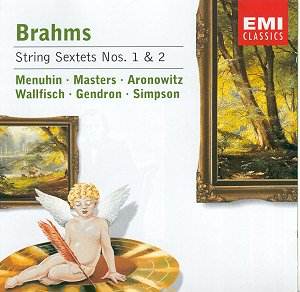 Composer: J.S. Bach
Composer: J.S. Bach
Works: Partita No. 3 in F, BWV 1006; Partita No. 2 in D minor, BWV 1004; Sonata No. 3 in C, BWV 1005
Performers: Hilary Hahn (violin)
Recording: SK62793 [DW]
Label: SONY CLASSICS
The solo violin works of Johann Sebastian Bach have long been regarded as pinnacles of the instrument’s repertoire, marked by their intricate counterpoint and profound emotional depth. These compositions, particularly the Partitas and Sonatas, were conceived in an era when the violin was still carving its identity within the Western musical canon. Hilary Hahn’s latest recording presents a compelling interpretation of these masterpieces, underscoring not only the technical demands of the music but also its emotional resonance.
Hahn’s approach to the Partita No. 3 in F, BWV 1006, reveals a refreshing clarity that eschews the ostentatious interpretations often associated with this repertoire. The opening Prelude is imbued with a judicious tempo that allows the listener to savor the unfolding lines without succumbing to the temptation of over-dramatization. Hahn’s choice to play all repeats exemplifies her commitment to the music’s structural integrity. Her phrasing avoids the pitfalls of excessive rubato, instead favoring a steady pulse that breathes life into the music while maintaining its inherent dignity.
The Minuet I and II, while often misconstrued as dance-like movements, are rendered here with a nuanced understanding that transcends mere stylistic imitation. Hahn’s interpretation sidesteps the cliché of rigid metrical emphasis, allowing the music to flow organically. Yet, one minor critique arises in her handling of the Gavotte and Rondeau; the emphasis on certain notes, particularly the major seventh, occasionally disrupts the thematic clarity. Nevertheless, her double-stopping is masterful, providing a robust foundation to the work’s polyphonic structure.
Turning to the Partita No. 2 in D minor, BWV 1004, Hahn embraces a meditative quality, particularly in the haunting Allemande. The sound she produces is rich and warm, drawing the listener into a world of introspection, a stark contrast to the more exuberant character of the Third Partita. This movement, while lengthy, benefits from her careful pacing, avoiding the pitfalls of monotony through subtle tonal variations and dynamic contrasts. The Sarabande emerges as a highlight, showcasing Hahn’s ability to evoke deep emotion without resorting to sentimentality—a rare feat in performances of Bach.
The Chaconne, a monumental work from the Partita No. 2, poses interpretive challenges that Hahn navigates with remarkable poise. Her ability to maintain structural coherence over the work’s expansive length is commendable; each variation unfolds naturally, revealing her exceptional command over phrasing and articulation. Here, the recording’s engineering occasionally betrays her, with the microphones picking up minor imperfections. However, these blemishes are forgivable in light of her overall musicality and commitment to the score.
Hahn’s performance of the Sonata No. 3 in C, BWV 1005, further solidifies her stature as a leading interpreter of Bach. The Adagio’s ethereal quality is rendered with a sensitive touch, capturing the listener’s attention from the outset. Her bowing technique shines in the extended Fugue, where every note resonates with clarity and purpose, demonstrating that a violin can indeed articulate multiple voices simultaneously. The Allegro assai concludes the sonata with an invigorating energy, encapsulating the joy inherent in Bach’s writing.
This recording of Bach’s works for solo violin stands out not only for its technical proficiency but also for its deep interpretive insight. Hahn approaches these masterpieces with a blend of respect and innovation, allowing the music to speak for itself while avoiding the pitfalls of excessive elaboration. For both aficionados and newcomers to Bach’s oeuvre, this recording is an essential addition, revealing the enduring power and beauty of these timeless compositions. The artistry displayed here elevates Hilary Hahn’s interpretation to a memorable and significant contribution to the recorded legacy of Bach’s violin works.



